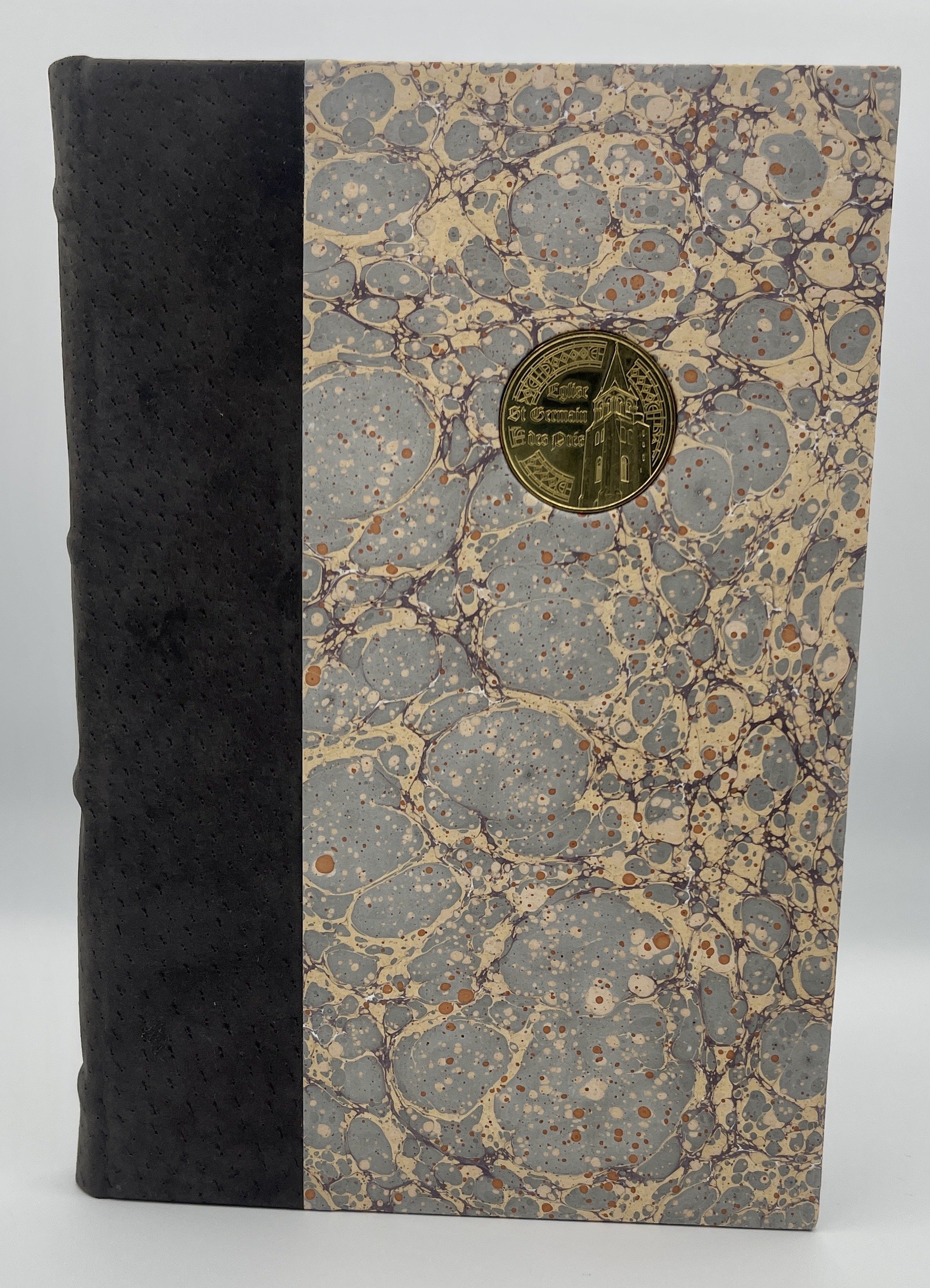St. Germain
Colophon:
This hand-sewn journal is made from 50# sulphite drawing paper stitched with Irish linen thread in the linked pattern that was developed by the ancient Copts and discovered in Nag Hammadi, Egypt in 1945.
Like all of our journals/sketchbooks, this book is sewn to lay flat almost effortlessly to any page. You won’t have to “crack the spine” on this book.
Its endbands are blue and white cotton, and its bookmark is pigskin. Its fly leaves were hand-marbled in India. Its spine is covered in aniline dyed pigskin, and its boards are wrapped hand-marbled paper from Relma in Paris, France.
Treasure binding began with monks in the 6th Century who would encrust volumes with jewels. During the Renaissance, there was a resurgence in treasure binding. This is a contemporary revival of the treasure binding in which a lucky charm has been embedded in the cover of this book.
The talisman in this journal is a token from the Saint Germain des Pres, the oldest church in Paris. Equally at home in Paris or on your shelf, this book is your timeless accoutrement.
This book is roughly 6 x 9” with a few more than 170 blank pages.
Colophon:
This hand-sewn journal is made from 50# sulphite drawing paper stitched with Irish linen thread in the linked pattern that was developed by the ancient Copts and discovered in Nag Hammadi, Egypt in 1945.
Like all of our journals/sketchbooks, this book is sewn to lay flat almost effortlessly to any page. You won’t have to “crack the spine” on this book.
Its endbands are blue and white cotton, and its bookmark is pigskin. Its fly leaves were hand-marbled in India. Its spine is covered in aniline dyed pigskin, and its boards are wrapped hand-marbled paper from Relma in Paris, France.
Treasure binding began with monks in the 6th Century who would encrust volumes with jewels. During the Renaissance, there was a resurgence in treasure binding. This is a contemporary revival of the treasure binding in which a lucky charm has been embedded in the cover of this book.
The talisman in this journal is a token from the Saint Germain des Pres, the oldest church in Paris. Equally at home in Paris or on your shelf, this book is your timeless accoutrement.
This book is roughly 6 x 9” with a few more than 170 blank pages.
Colophon:
This hand-sewn journal is made from 50# sulphite drawing paper stitched with Irish linen thread in the linked pattern that was developed by the ancient Copts and discovered in Nag Hammadi, Egypt in 1945.
Like all of our journals/sketchbooks, this book is sewn to lay flat almost effortlessly to any page. You won’t have to “crack the spine” on this book.
Its endbands are blue and white cotton, and its bookmark is pigskin. Its fly leaves were hand-marbled in India. Its spine is covered in aniline dyed pigskin, and its boards are wrapped hand-marbled paper from Relma in Paris, France.
Treasure binding began with monks in the 6th Century who would encrust volumes with jewels. During the Renaissance, there was a resurgence in treasure binding. This is a contemporary revival of the treasure binding in which a lucky charm has been embedded in the cover of this book.
The talisman in this journal is a token from the Saint Germain des Pres, the oldest church in Paris. Equally at home in Paris or on your shelf, this book is your timeless accoutrement.
This book is roughly 6 x 9” with a few more than 170 blank pages.






